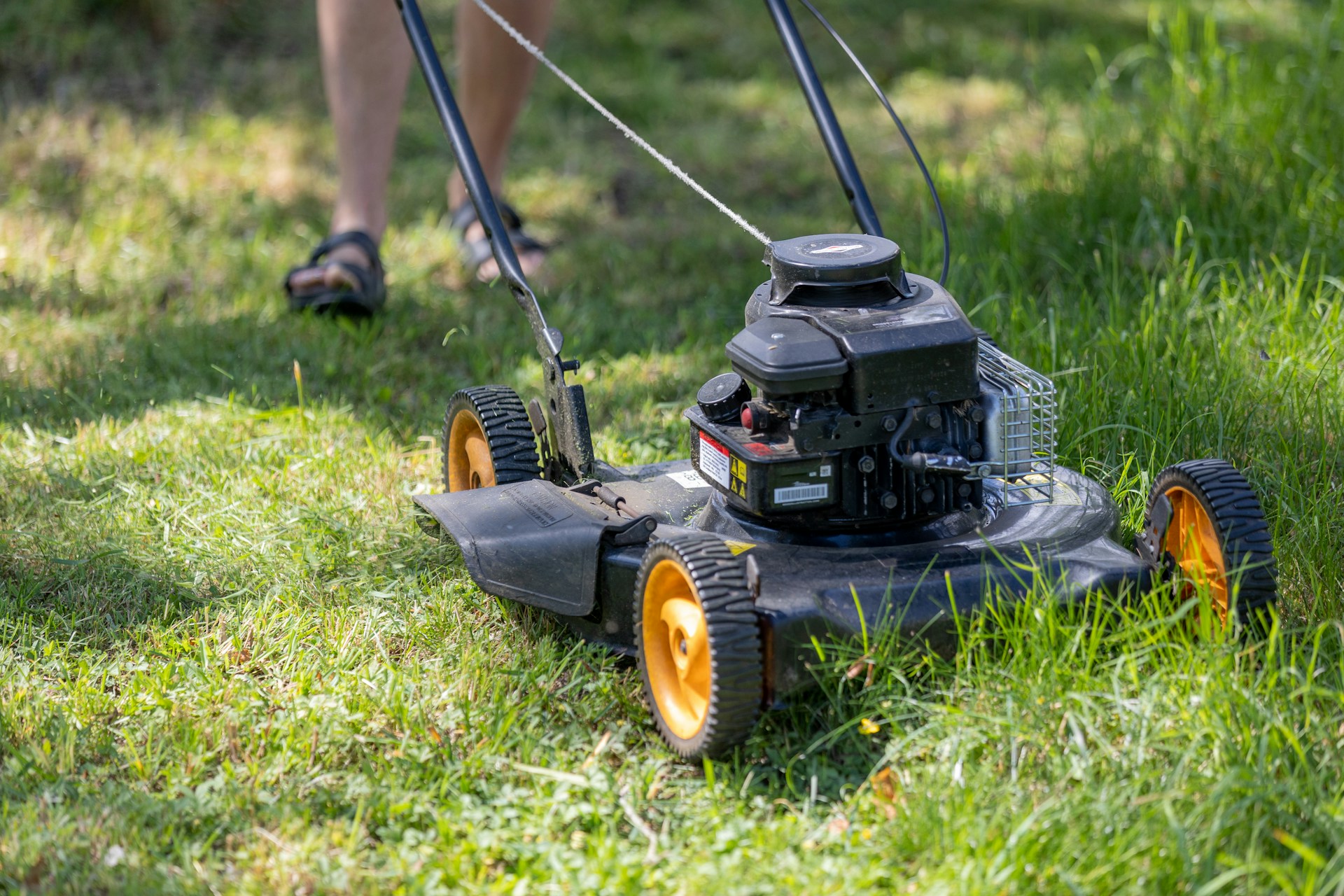
Your lawn mower is more than just a tool; it’s a key part of keeping your property’s curb appeal in top shape. Unfortunately, improper maintenance often leads to a shorter lifespan for this essential equipment.
By giving your lawn mower the proper care and attention it deserves, you can ensure the engine delivers reliable performance for decades, not just a few years.
This guide is packed with practical, proven strategies to extend your lawn mower’s life, minimize repair costs, and keep it running smoothly throughout every mowing season.
From setting up a routine maintenance schedule to troubleshooting common issues, you’ll find clear, actionable steps to help you protect your investment.
And if you’re someone who knows the importance of caring for your gear, whether it’s outdoor tools or visiting your favorite dirt bike dealer for advice, the principles outlined here will resonate with you. Start maximizing your lawn mower’s longevity today!
Regular Oil Changes Make All the Difference
Oil serves as the lifeblood of any small engine, lubricating moving parts and preventing costly damage from friction and heat. Fresh oil maintains proper viscosity and provides superior protection compared to contaminated or degraded lubricants.
Establishing Your Oil Change Schedule
Most manufacturers recommend changing oil every 25-50 hours of operation or at least once per season. However, operating conditions significantly impact this timeline. Dusty environments, extreme temperatures, or frequent use require more frequent changes.
Check your owner’s manual for specific recommendations, but consider these general guidelines:
- New engines need oil changes after the first 5 hours of operation
- Seasonal users should change the oil at the beginning of each mowing season
- Heavy-use equipment may need monthly oil changes during peak season
Choosing the Right Oil Grade
Select oil viscosity based on your climate and operating conditions. SAE 30 works well for warmer temperatures, while 10W-30 provides better cold-weather starting. Synthetic oils offer superior protection and longer intervals between changes, though they cost more initially.
Air Filter Maintenance Prevents Engine Damage
Clean air filters protect your lawn mower engine from dust, debris, and contaminants that can cause premature wear. Clogged filters restrict airflow, leading to poor performance and potential engine damage.
Inspection and Cleaning Process
Remove the air filter housing and examine the filter element monthly during mowing season. Paper filters should appear relatively clean and free from tears or damage. Foam filters need regular washing with mild detergent and thorough drying before reinstallation.
Replace paper filters when they become dark or heavily soiled. Clean foam filters can be reused multiple times but should be replaced annually or when they begin deteriorating.
Impact on Engine Performance
A clean air filter ensures proper fuel-to-air ratios, which directly affects engine performance and longevity. Restricted airflow forces the engine to work harder, increasing fuel consumption and accelerating wear on internal components.
Proper Fuel Management Prevents Costly Repairs
Fuel-related problems cause more small engine failures than any other single factor. Stale gasoline, water contamination, and ethanol-related issues can damage fuel systems and internal engine components.
Fuel Storage Best Practices
Use fresh gasoline and consume it within 30 days of purchase. Add fuel stabilizer to extend storage life up to 12 months. Store fuel in approved containers away from heat sources and potential ignition hazards.
Consider using ethanol-free gasoline when available, as it causes fewer problems in small engines. If ethanol-blended fuel is your only option, never use blends higher than 10% ethanol (E10).
Seasonal Fuel System Care
Before storing your mower for winter, either run the engine dry or add a fuel stabilizer to prevent fuel degradation. Old fuel can form varnish deposits that clog carburetors and fuel lines, requiring expensive repairs.
At the beginning of each season, inspect fuel lines for cracks or deterioration. Replace any damaged components before they cause fuel leaks or engine problems.
Spark Plug Replacement Ensures Reliable Starting
Spark plugs provide the ignition source that powers your engine. Worn or fouled plugs cause hard starting, poor performance, and increased fuel consumption.
Inspection and Replacement Schedule
Remove and inspect spark plugs at the beginning of each mowing season. Look for signs of wear, carbon buildup, or electrode erosion. Replace plugs that show significant wear or damage.
Most manufacturers recommend annual spark plug replacements for optimal performance. However, high-quality plugs in well-maintained engines may last longer with regular cleaning and gap adjustment.
Proper Installation Techniques
Install new spark plugs hand-tight, then tighten an additional 1/4 to 1/2 turn with a wrench. Over-tightening can damage threads or crack the plug housing. Under-tightening may cause poor electrical contact and engine misfires.
Deck Maintenance Protects the Entire Machine
The mower deck endures constant bombardment from grass clippings, moisture, and debris. Proper deck maintenance prevents rust, maintains cutting performance, and extends overall machine life.
Cleaning and Inspection Routine
Clean the deck after each use to prevent grass buildup and corrosion. Remove caked-on debris with a putty knife or pressure washer, then dry thoroughly. Apply a light coat of oil to exposed metal surfaces for rust prevention.
Inspect the deck regularly for cracks, rust spots, or damage. Address minor issues immediately before they become major problems requiring expensive repairs or replacement.
Blade Maintenance and Sharpening
Sharp blades cut cleanly and reduce engine strain. Dull blades tear the grass rather than cutting it, creating brown tips and weakening your lawn. They also require more engine power, increasing fuel consumption and wear.
Sharpen or replace blades at least once per season, or more frequently if you encounter rocks, roots, or other obstacles. Professional sharpening costs less than replacement blades and ensures proper balance.
Storage Practices That Prevent Off-Season Damage
Proper storage protects your investment during months of inactivity. Neglecting storage procedures can lead to fuel system problems, corrosion, and component deterioration.
Pre-Storage Preparation
Clean the entire machine thoroughly, removing all grass clippings and debris. Change the oil and replace the air filter if needed. Either run the engine dry or fill the tank with stabilized fuel.
Remove the spark plug and add a small amount of oil to the cylinder. Pull the starter cord slowly to distribute oil over internal surfaces. Replace the spark plug and store it in a dry location.
Storage Environment Considerations
Store your mower in a dry, well-ventilated area away from corrosive chemicals or salt. Cover the machine with a breathable tarp or equipment cover to prevent dust accumulation while allowing air circulation.
Avoid storing in areas with extreme temperature fluctuations, as condensation can form inside the engine and fuel system. Consistent, moderate temperatures provide the best storage conditions.
Troubleshooting Common Engine Problems
Understanding basic troubleshooting helps you identify problems early and avoid costly repairs. Many issues stem from simple maintenance oversights rather than mechanical failures.
Starting Problems
Difficulty starting often indicates fuel, spark, or air delivery problems. Check fuel freshness, spark plug condition, and air filter cleanliness first. These account for the majority of starting issues.
If the engine turns over but won’t start, verify fuel is reaching the carburetor and that the spark plug produces a strong blue spark. Clean or replace components as needed.
Performance Issues
Poor performance, rough running, or excessive vibration typically indicate maintenance-related problems. Dirty air filters, old fuel, or worn spark plugs cause most performance issues.
Check all basic maintenance items before assuming major mechanical problems. Many performance issues are resolved with proper maintenance and fresh fuel.
Professional Service and When to Seek Help
Proper maintenance plays a critical role in ensuring engine longevity, but knowing when to seek professional help is just as important. While homeowners can handle basic maintenance, certain procedures require the expertise of trained technicians to prevent damage and ensure accurate repairs.
Annual Professional Inspection
For a thorough check-up that goes beyond routine tasks, consider an annual professional inspection. Services like carburetor cleaning, valve adjustment, and internal engine inspection are necessary steps that amateurs may not be equipped to handle.
Many dirt bike dealers and small engine repair shops offer seasonal maintenance packages at discounted rates. These preventive services not only extend engine longevity but also save you from costly emergency repairs down the line.
When to Turn to the Experts
Some situations demand the expertise of professional technicians. Internal engine problems, electrical issues, or complex carburetor repairs are best left to professionals. Attempting these fixes without the right tools or knowledge can worsen the damage and increase repair costs.
Professionals bring years of training and access to advanced tools, allowing them to diagnose problems accurately and complete repairs efficiently. Their expertise ensures that repairs are done correctly the first time, ultimately protecting both your engine and your wallet.
By combining regular upkeep with timely professional servicing, you can maximize your engine’s longevity and ensure peak performance for years to come.
Maximizing Your Investment Through Proper Care
Transform your lawn mower from a short-term tool into a reliable, long-term investment by following these small engine tips. Regular maintenance not only costs less than early replacements but also ensures your equipment performs reliably when you need it most.
Start by inspecting your equipment thoroughly. Fix any existing issues before they escalate, and set up a consistent maintenance schedule. Keep a log of all maintenance tasks to track your equipment’s history and identify any recurring issues.
Remember, most expensive repairs can be avoided with basic, consistent upkeep. A small annual time investment can extend your equipment’s lifespan significantly while keeping it performing at its best season after season.

















































